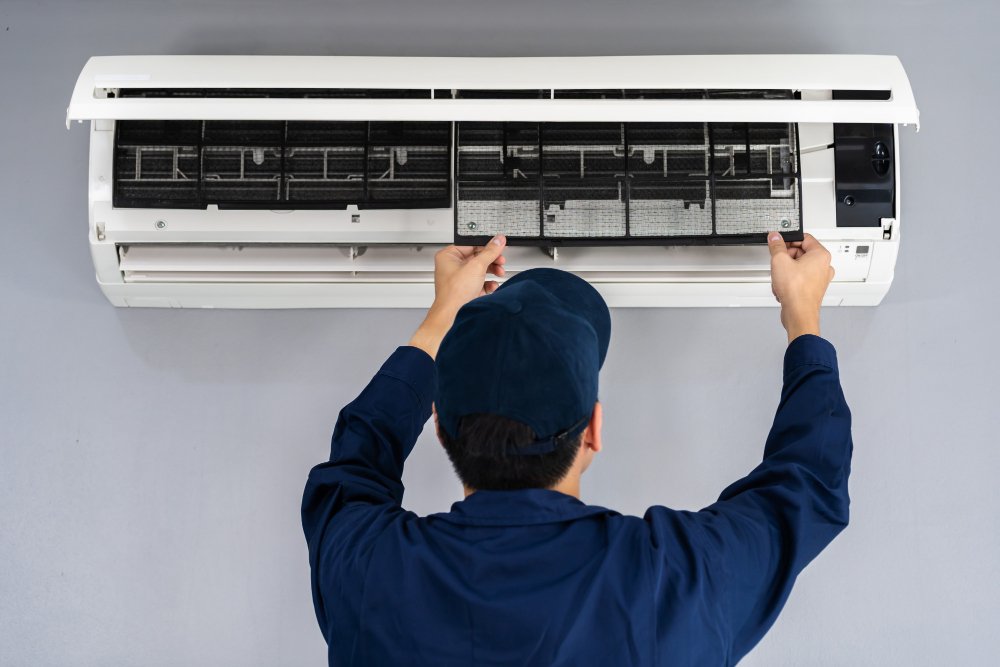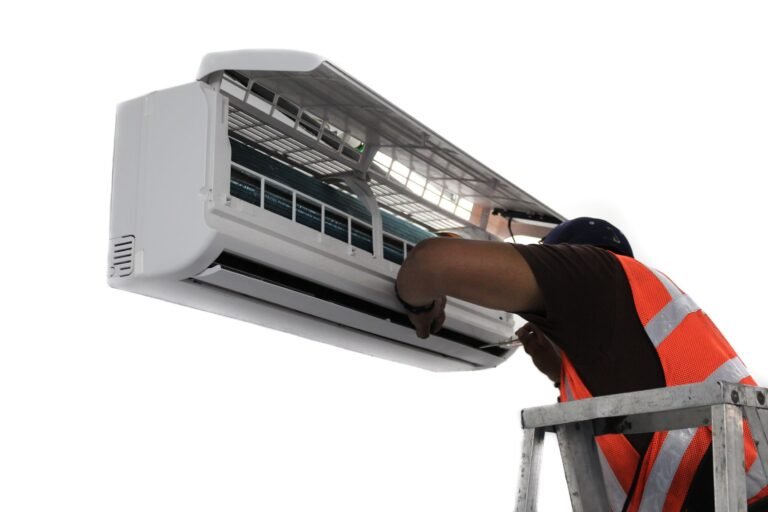Mitsubishi Split AC Error Code List: Troubleshoot and Fix AC Errors Effortlessly
Mitsubishi Split Ac Error Code List provides a comprehensive guide to the various error codes that may occur in Mitsubishi split air conditioning units. These error codes assist in diagnosing and troubleshooting issues by indicating specific problems within the system.
Whether it is an error related to temperature sensors, indoor or outdoor units, fan motors, compressor, or communication errors, the error code list helps users to identify the underlying issue quickly and efficiently. Understanding these error codes enables prompt resolution of the problem, ensuring optimal performance of Mitsubishi split AC units.

Credit: comfortup.com
Understanding Mitsubishi Split Ac Error Codes
Understanding Mitsubishi Split AC Error Codes
When it comes to troubleshooting issues with your Mitsubishi Split AC, understanding the error codes displayed by the unit is crucial. Error codes are diagnostic tools that provide valuable information about the specific problems your AC unit is experiencing. By decoding these error codes, you can identify the underlying issues accurately, allowing you to take the necessary steps to fix the problem.
Explanation of why Mitsubishi Split AC displays error codes.
So why exactly does your Mitsubishi Split AC display error codes? The answer lies in the complexity of the unit’s built-in control system. Each error code corresponds to a distinct problem that the AC unit has encountered. By displaying error codes, Mitsubishi Split ACs help technicians and users quickly pinpoint the specific areas of concern.
Importance of understanding error codes for accurate troubleshooting.
Understanding error codes is essential for accurate troubleshooting of your Mitsubishi Split AC. Instead of relying on guesswork or trial and error, error codes provide clear and concise information about the underlying problems. This allows you to save time and effort by directly addressing the issue at hand, without wasting resources on unnecessary repairs or replacements.
How error codes help in identifying specific issues with the AC unit.
Error codes play a crucial role in identifying specific issues with your AC unit. Each error code corresponds to a particular problem or malfunction within the system. By referring to the error code list provided by Mitsubishi, you can easily identify the specific issue indicated by the displayed code. This knowledge empowers you to take appropriate action, whether it involves cleaning or replacing a particular component, adjusting settings, or calling a professional technician for further assistance.
By understanding Mitsubishi Split AC error codes, you gain valuable insight into the problems your AC unit is facing, enabling you to troubleshoot effectively and efficiently. Make sure to consult the user manual or contact Mitsubishi’s customer support for the specific error code list applicable to your model.
Common Mitsubishi Split Ac Error Codes And Their Meanings
Mitsubishi split air conditioners are known for their reliability and cooling performance. However, like any electronic device, they can encounter errors and malfunctions from time to time. Understanding the meaning behind these error codes can help you troubleshoot and fix issues with your Mitsubishi split AC efficiently. In this article, we will explain the most frequently encountered error codes and their meanings, along with possible causes and recommended actions for troubleshooting.
Explanations of the most frequently encountered error codes and their meanings:
E0 – Communication error between indoor and outdoor units
The E0 error code indicates a communication problem between the indoor and outdoor units of your Mitsubishi split AC. This error can occur due to loose or damaged wiring, a faulty control board, or a communication module malfunction.
Possible causes:
- Loose or damaged wiring connections
- Faulty control board
- Communication module malfunction
Recommended actions for troubleshooting:
- Check all wiring connections between the indoor and outdoor units for any looseness or damage. Reconnect or replace the wiring as necessary.
- If the wiring connections are intact, try resetting the power to the AC unit by turning off the circuit breaker or unplugging it for a few minutes. Then, turn it back on and check if the error persists.
- If the error continues, contact a qualified technician to diagnose and repair the faulty control board or communication module.
E1 – Room temperature sensor error
The E1 error code indicates a problem with the room temperature sensor in your Mitsubishi split AC. This error can occur if the sensor is damaged, disconnected, or experiencing calibration issues.
Possible causes:
- Damaged or disconnected room temperature sensor
- Calibration issues with the sensor
Recommended actions for troubleshooting:
- Check if the room temperature sensor is properly connected and not physically damaged. Reconnect or replace the sensor as necessary.
- If the sensor appears to be in good condition, try calibrating it according to the manufacturer’s instructions. Consult the user manual or contact Mitsubishi customer support for guidance.
- If the error persists after troubleshooting, it may be necessary to replace the faulty room temperature sensor. Contact a qualified technician for assistance.
E2 – Indoor coil temperature sensor error
The E2 error code indicates a problem with the indoor coil temperature sensor of your Mitsubishi split AC. This error can occur if the sensor is faulty or has become disconnected.
Possible causes:
- Faulty indoor coil temperature sensor
- Disconnection of the sensor
Recommended actions for troubleshooting:
- Inspect the indoor coil temperature sensor for any signs of damage or disconnection. Reconnect or replace the sensor if necessary.
- If the sensor appears to be in good condition, it may be necessary to test its functionality using a temperature probe or multimeter. Follow the manufacturer’s instructions or seek professional help for accurate testing.
- If the sensor is confirmed to be faulty, contact a qualified technician to replace it and ensure proper functioning of your Mitsubishi split AC.
E3 – Overcurrent protection
The E3 error code indicates that your Mitsubishi split AC has activated its overcurrent protection feature. This feature is designed to protect the AC unit from excessive electrical current that could potentially cause damage.
Possible causes:
- Electrical overload
- Faulty electrical components
Recommended actions for troubleshooting:
- Check if any electrical overload has occurred, such as running too many appliances simultaneously on the same circuit. Reduce the electrical load and try resetting the power to the AC unit.
- If the error persists, it may indicate a fault in the electrical components of the AC unit. Contact a qualified technician to inspect and repair any faulty components.
E4 – Outdoor coil temperature sensor error
The E4 error code indicates a problem with the outdoor coil temperature sensor of your Mitsubishi split AC. This error can occur if the sensor is damaged or disconnected.
Possible causes:
- Damage or disconnection of the outdoor coil temperature sensor
Recommended actions for troubleshooting:
- Inspect the outdoor coil temperature sensor for any signs of damage or disconnection. Reconnect or replace the sensor as necessary.
- If the sensor appears to be in good condition, it may be necessary to test its functionality using a temperature probe or multimeter. Follow the manufacturer’s instructions or seek professional help for accurate testing.
- If the sensor is confirmed to be faulty, contact a qualified technician to replace it and ensure proper functioning of your Mitsubishi split AC.
E5 – Overheating protection
The E5 error code indicates that your Mitsubishi split AC has activated its overheating protection feature. This feature is designed to prevent the AC unit from overheating and causing damage to its internal components.
Possible causes:
- Insufficient ventilation
- Dust accumulation in the AC unit
- Faulty cooling fan
Recommended actions for troubleshooting:
- Check if there is adequate ventilation around the AC unit. Remove any obstructions that may be blocking the airflow.
- Clean the AC unit and ensure that there is no excessive dust accumulation on the internal components. Use a soft brush or compressed air to remove the dust.
- If the AC unit has a cooling fan, inspect it for any signs of malfunction or obstruction. Replace the fan if necessary.
- If the error persists after troubleshooting, contact a qualified technician to inspect and repair any underlying issues with your Mitsubishi split AC.
Advanced Troubleshooting And Fixing Techniques
Steps to take when encountering error codes not mentioned in the previous section
If you come across error codes that are not listed in the previous section, there are some steps you can take to troubleshoot and fix the issue. By following these steps, you can ensure that you are taking the right actions to resolve the problem with your Mitsubishi split AC.
- Refer to the User Manual: The first step is to consult the user manual provided by Mitsubishi. The manual usually contains a comprehensive list of error codes and their corresponding solutions. Look for the error code you are facing and follow the recommended actions.
- Check the Mitsubishi Website or Online Forums: If you cannot find the solution in the user manual, check the official Mitsubishi website or online forums dedicated to HVAC systems. These platforms often provide additional information and troubleshooting steps for less common error codes.
- Contact Mitsubishi Customer Support: If you still cannot find a solution, it’s best to reach out to Mitsubishi’s customer support team. They have the expertise to guide you through the troubleshooting process and suggest possible fixes.
Examples of less common error codes and how to troubleshoot them
While some error codes are common and frequently encountered, there are others that are less common but may still occur. Here are a few examples of less common error codes and the troubleshooting steps to resolve them:
| Error Code | Troubleshooting Steps |
|---|---|
| E6 | Check the indoor coil sensor and clean it if necessary. If the sensor is damaged, it may need to be replaced. |
| E9 | Inspect the room temperature sensor and ensure it is correctly installed. If the sensor is faulty, it may need to be replaced. |
| E5 | Check the outdoor temperature sensor and ensure it is not obstructed or covered. Clean the sensor if necessary. If the sensor is defective, consider replacing it. |
Tips and tricks for efficient troubleshooting and fixing of AC errors
Efficient troubleshooting and fixing of AC errors can save you time and frustration. Here are some tips and tricks to help you in the process:
- Pay Attention to Error Codes: The error codes displayed by your Mitsubishi split AC provide valuable information about the problem. Analyze the code and refer to the user manual or online resources for specific troubleshooting steps.
- Perform Regular Maintenance: Regularly clean and maintain your AC unit to prevent common issues and errors. This includes cleaning filters, checking for debris, and scheduling professional maintenance checks.
- Keep Track of Error Codes: Maintain a record of error codes and the actions taken to resolve them. This can help in identifying recurring issues and patterns, allowing for faster and more accurate troubleshooting in the future.
Importance of professional help for complex error codes and technical issues
When encountering complex error codes or technical issues with your Mitsubishi split AC, seeking professional help is crucial. Trained HVAC technicians have the knowledge, experience, and specialized tools to accurately diagnose and repair advanced AC problems. Attempting to fix complex issues on your own may result in further damage to the unit or jeopardize your warranty.
Moreover, professional assistance ensures compliance with safety standards and ensures that the repair is done effectively and efficiently. By relying on experts, you can have peace of mind knowing that your AC system is in capable hands.
Frequently Asked Questions For Mitsubishi Split Ac Error Code List
How Do You Read A Mitsubishi Mini Split Error Code?
To read a Mitsubishi mini split error code, check the display panel on the unit for a combination of numbers or letters.
What Is The Error Code Up On Mitsubishi Electric Ac?
The error code on Mitsubishi Electric AC indicates a specific issue or malfunction.
Why Is The Light Blinking On My Mitsubishi Air Conditioner?
The blinking light on your Mitsubishi air conditioner indicates a problem with the unit.
What Is The Error Code 5201 On A Mitsubishi Mini Split?
Error code 5201 on a Mitsubishi mini split indicates a communication problem between the indoor and outdoor units.
Conclusion
Knowing the Mitsubishi Split AC error code list can be extremely helpful in determining the cause of any issues that may arise with your AC unit. By understanding what each error code represents, you can easily troubleshoot and fix the problem, either on your own or with the assistance of a professional.
It is important to note that while some error codes may require simple solutions such as cleaning or replacing filters, others may indicate more serious issues that require professional attention. Regular maintenance and timely repairs are essential to ensuring the longevity and efficient performance of your Mitsubishi Split AC.
By familiarizing yourself with the error code list and taking appropriate action, you can enjoy a cool and comfortable environment in your home or office for years to come.


